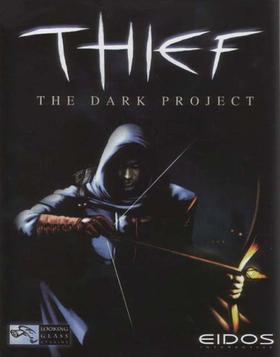
Thief

- Developed By Looking Glass Studios
- Published By Eidos Interactive
- Release Date Dec 03, 1998
Thief would go through different themes until he took the direction we know, one of those iterations would make the game flip the story of King Arthur, he and Merlin would be the bad guys and the witch and the other the good guys, and he would be called Dark Camelot. But between Spector, Levine, who would be alone at the beginning of development, and Neurath, they would end up converging on a game where stealing would be the main mechanic. Before Spector left the studio and Levine was assigned to another project, they laid down some groundwork that Neurath would embrace to further develop Thief [1,4].
An active stealth was wanted and that was interesting. One of the inspirations was the submarine games that Levine played, by not being discovered you were much more powerful, but if you were discovered you were extremely weak, that dynamic was important and had to be in Thief. You had ways to disguise your position and deceive the enemy, as “noise makers”, passing between hot and cold waters so they wouldn't see you on radar [3,1]... All of these mechanics were carried over to the final game, while you're invisible to enemies you can do a lot more, and even deal more damaging arrows and hits that will knock out the enemy, but at the time of that you are discovered the guards will go for you, they will warn other guards and you will have to fight melee if you have no other options, at this moment you are very vulnerable, because even if you try to protect yourself with your sword you are a thief, and not a master swordsman, so it's rarely going to be a fight where you can get away with it, so the best thing to do is sneak around and try to get out of sight of the guards.
Another point raised early on was, what can a thief do in Dungeons and Dragons? It was a starting point to establish what the character could do.
To be able to do all these things and make the player feel like they are taking on the role of a thief in "real" situations, the development of the Dark Engine was key, this engine will allow the environment and non-player characters to respond to the player's stimuli. , such as sounds or actions performed by it, in addition to allowing interaction with the stage through the creation of objects by joining different elements collected in this [1,5]. Being the vast majority of students at MIT, they were always looking for the best simulation, and that made the engine have an excellent physics and audio system for its time, that simulation makes it feel so real, and you connect more with that immersion. For example, the audio system is key in the game, being a first-person game you only see what is in front of you, you cannot do "tricks" as you could if your vision were 3 people, with that vision you could see areas that your character is not really seeing, so that generates a problem when trying not to be seen by the guards, to solve that problem all the enemies make constant noise, their footsteps on the different terrains and their babbling or whistling make you can make a vision of how they are arranged on stage and what dangers are around. In the same way, the feedback you receive when you do something that interacts with the guards is done in the same way, if you have turned off a torch and the guard loses vision over that area, he himself comments on it, or if you have made noise, but not long enough for them to see you comment something like: I think I heard something, but I can't see anything strange [3,2].